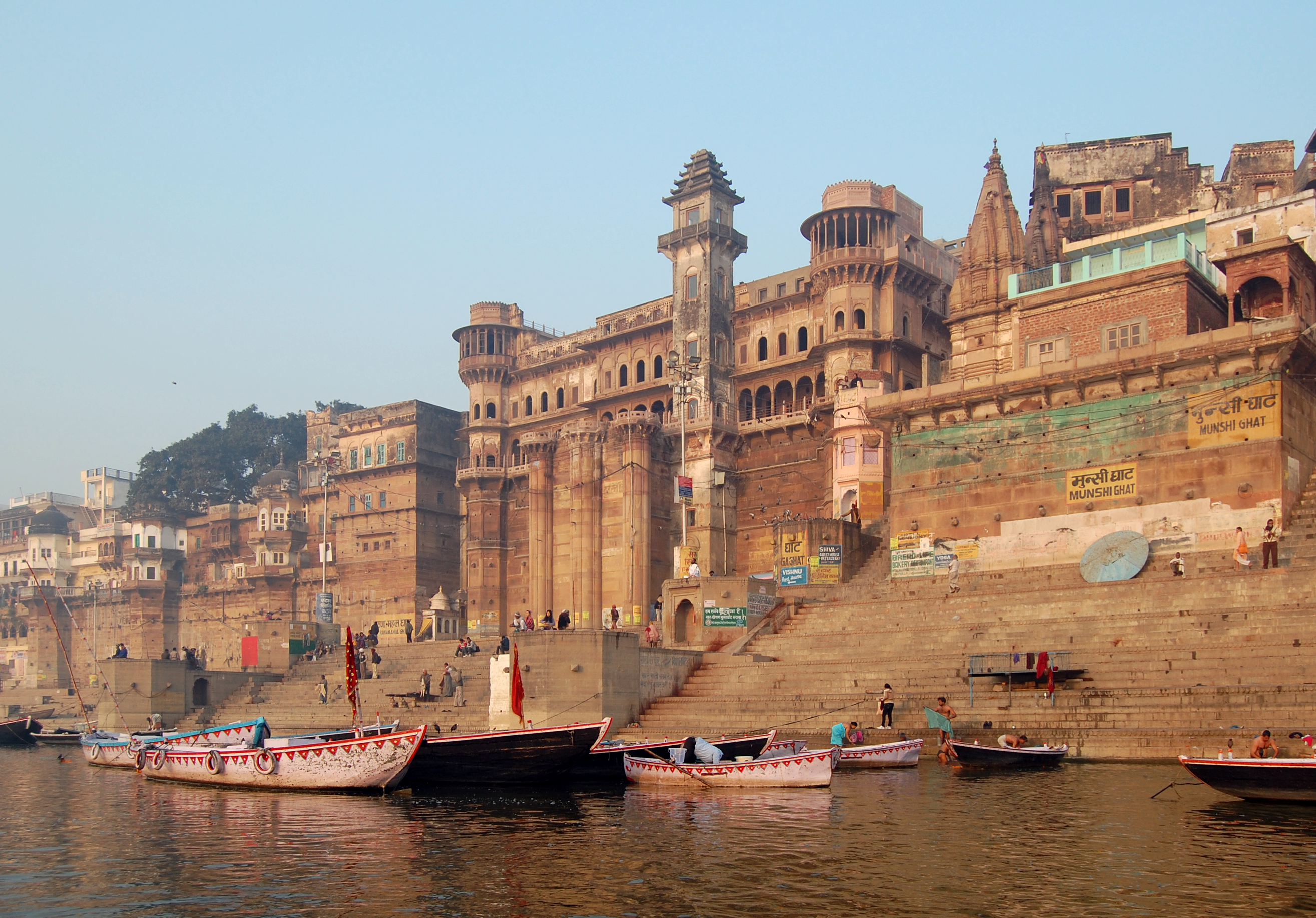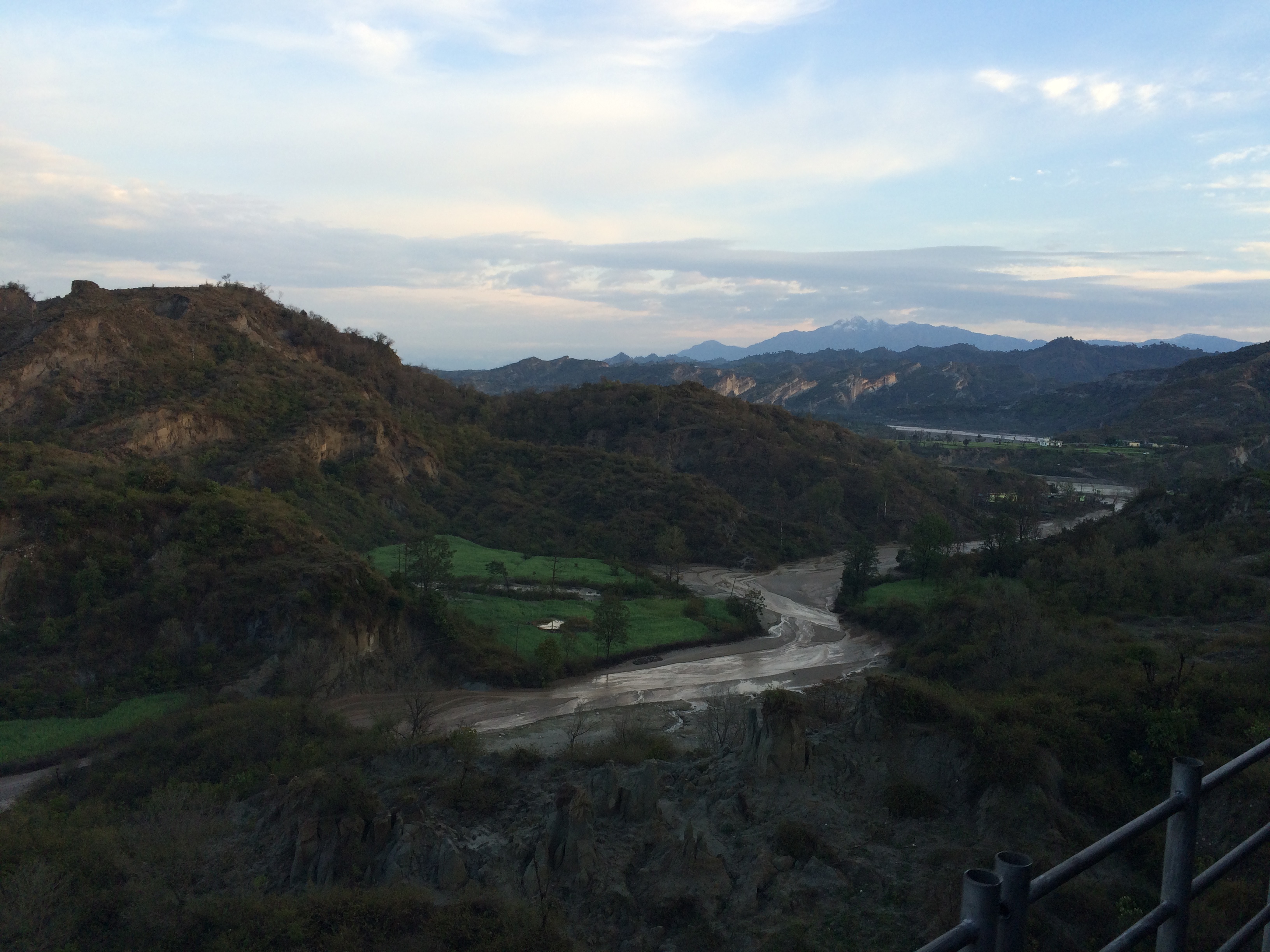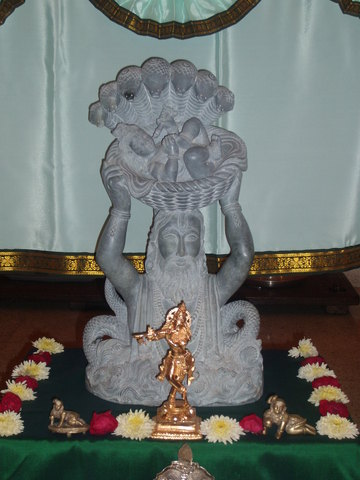|
1924 Kohat Riots
The 1924 Kohat riots happened in the Kohat town of the North-West Frontier Province, British India in 1924. In three days (9–11 September) of rioting, official statistics peg the number of casualties among Hindus and Sikhs at more than thrice that of Muslims; almost the entire Hindu population had to be evacuated to Rawalpindi. Background In the 1921 census, Kohat had a population of about 8,000 Hindus and Sikhs, and 19,000 Muslims. Much of the bureaucracy was composed of Muslims. The Hindus were economically dominant: income tax records of the same year note indicate they paid four times as much tax as Muslims. Prior to the twentieth century, says Patrick McGinn, relations between the two religious communities were peaceful and exhibited multiple instances of cooperation. However, with the turn of the century, waves of religiopolitical consciousness swept Kohat. With the Indian Nationalist Movement being extensively Hindu-ised, subcontinental Muslims sought out faith-based a ... [...More Info...] [...Related Items...] OR: [Wikipedia] [Google] [Baidu] |
Kohat
Kohat ( ps, کوهاټ; ur, ) is a city that serves as the capital of the Kohat District in Khyber Pakhtunkhwa, Pakistan. It is regarded as a centre of the Bangash tribe of Pashtuns, who have lived in the region since the late 15th century. With a population of over 220,000 people, the city is the fourth-largest in Khyber Pakhtunkhwa and the 35th-largest in Pakistan in terms of population. Kohat's immediate environs were the site of frequent armed skirmishes between British colonialist forces and local tribesmen in the mid to late 19th century. It is centred on a British-era fort, various bazaars, and a military cantonment. Pashto and the Kohati dialect of Hindko are the main languages spoken in Kohat. The city of Kohat is also the namesake of and largest city in the Kohat Division, being over four times larger than the second-largest city in the division: Karak. History Early history Little is known of Kohat's early history. According to local lore, Kohat wa ... [...More Info...] [...Related Items...] OR: [Wikipedia] [Google] [Baidu] |
Ghat
Ghat, a term used in the Indian subcontinent, depending on the context could refer either to a range of stepped hills with valleys (ghati in Hindi), such as the Eastern Ghats and Western Ghats; or the series of steps leading down to a body of water or wharf, such as a bathing or cremation place along the banks of a river or pond, the Ghats in Varanasi, Dhobi Ghat or the Aapravasi Ghat.Sunithi L. Narayan, Revathy Nagaswami, 1992Discover sublime India: handbook for tourists Page 5.Ghat definition Cambridge dictionary. Roads passing through ghats are called . Etymology The origin of the English 'ghat' is sa, घट्ट , ' and is normally translated as ghaṭ, quay, landing or ...[...More Info...] [...Related Items...] OR: [Wikipedia] [Google] [Baidu] |
1924 In India
Events in the year 1924 in India. Incumbents * Emperor of India – George V * Viceroy of India – The Earl of Reading Events * National income - 29,930 million * 12 January – Gopinath Saha shoots a man he erroneously thinks is a Police commissioner of Calcutta, Charles Augustus Tegart – he is arrested soon after. * January - Bombay textile mill strike by communists began. * February – Mohandas Gandhi is released prematurely on medical grounds. * 30 March - Commencement of Vaikom Satyagraha (the first ever struggle against apartheid in the World) designed by T K Madhavan and Sree Narayana Guru in Kerala, South India. * July - Great Flood at Kerala – Great flood of 99 * 9–11 September – 1924 Kohat riots. * 17 September - 21 days long fasting by Mahatma Gandhi for Hindu - Muslim unity. * 4 December – The Gateway of India in Bombay, built to commemorate the visit of King George V and Queen Mary in December 1911, is opened by the Viceroy, the Earl of Reading. * R ... [...More Info...] [...Related Items...] OR: [Wikipedia] [Google] [Baidu] |
Kohat District
Kohat District ( ps, کوهاټ ولسوالۍ , ur, ) is a district in Kohat Division of Khyber Pakhtunkhwa province in Pakistan. Kohat city is the capital of the district. History Mughal era From the early sixteenth century the history of Kohat revolves around three major tribes namely Bangash, Banoori, and Afridi. These people appear to have settled in the district, during 14th and 15th centuries. From 16th to 18th centuries, Kohat being part of Mughal Empire was administered by the chiefs of two aforementioned tribes. Demography At the time of the 2017 census the district had a population of 1,111,266, of which 555,765 were males and 555,390 females. Rural population was 841,340 (75.71%) while the urban population was 269,926 (24.29%). The literacy rate was 58.59% - the male literacy rate was 77.75% while the female literacy rate was 39.96%. At the time of the 2011 census, 83.85% of the population spoke Pashto, 12.87% Hindko, 1.24% Urdu and 1.19% Punjabi as their first ... [...More Info...] [...Related Items...] OR: [Wikipedia] [Google] [Baidu] |
History Of Khyber Pakhtunkhwa
The History of Khyber Pakhtunkhwa refers to the history of the modern-day Pakistani province of Khyber Pakhtunkhwa, including the former Federally Administered Tribal Areas, which has colloquially been referred to as Pashtunistan. The earliest evidence from the region indicates that trade was common via the Khyber Pass; originating from the Indus Valley Civilization. The early people of the region were a Vedic people known as the Pakthas, identified with the modern day Pakhtun peoples. The Vedic culture reached its peak between the 6th and 1st centuries B.C under the Gandharan Civilization, and was identified as a center of Hindu and Buddhist learning and scholarship. The area saw a brief shock during the invasions of Alexander the Great, which had managed to conquer the small Janapadas, or city states, that had ruled the region. Seizing the resulting instability and inexperience of the local Greek governors, a young prince named Chandragupta Maurya managed to take control of the ... [...More Info...] [...Related Items...] OR: [Wikipedia] [Google] [Baidu] |
Mahatma Gandhi
Mohandas Karamchand Gandhi (; ; 2 October 1869 – 30 January 1948), popularly known as Mahatma Gandhi, was an Indian lawyer, anti-colonial nationalist Quote: "... marks Gandhi as a hybrid cosmopolitan figure who transformed ... anti-colonial nationalist politics in the twentieth-century in ways that neither indigenous nor westernized Indian nationalists could." and political ethicist Quote: "Gandhi staked his reputation as an original political thinker on this specific issue. Hitherto, violence had been used in the name of political rights, such as in street riots, regicide, or armed revolutions. Gandhi believes there is a better way of securing political rights, that of nonviolence, and that this new way marks an advance in political ethics." who employed nonviolent resistance to lead the successful campaign for India's independence from British rule, and to later inspire movements for civil rights and freedom across the world. The honorific ''Mahātmā'' (Sanskrit ... [...More Info...] [...Related Items...] OR: [Wikipedia] [Google] [Baidu] |
Rufus Isaacs, 1st Marquess Of Reading
Rufus Daniel Isaacs, 1st Marquess of Reading, (10 October 1860 – 30 December 1935) was a British Liberal politician and judge, who served as Lord Chief Justice of England, Viceroy of India, and Foreign Secretary, the last Liberal to hold that post. The second practising Jew to be a member of the British cabinet (the first being Herbert Samuel, who was also a member of H. H. Asquith's government), Isaacs was the first Jew to be Lord Chief Justice, and the first, and as yet, only British Jew to be raised to a marquessate. Biography Rufus Isaacs was born at 3 Bury Street, in the parish of St Mary Axe, London, the son of a Jewish fruit importer at Spitalfields. He was educated at University College School and then entered the family business at the age of 15. In 1876–77 he served as a ship's boy and later worked as a jobber on the stock-exchange from 1880 to 1884. In 1887 he married Alice Edith Cohen, who suffered from a chronic physical disability and died of cancer in 1930, ... [...More Info...] [...Related Items...] OR: [Wikipedia] [Google] [Baidu] |
Denys Bray
Sir Denys de Saumarez Bray, KCSI, KCIE, CBE (29 November 1875 – 19 November 1951) was an etymologist and British colonial civil servant in the Empire of India, who served as Secretary of the Foreign Department of the Government of India. Bray's publications evidence his deep understanding of the Brahui language, and his later work on Shakespeare re-arranged the much disputed order of Shakespeare's Sonnets on the basis of the discovery of a hitherto unexpected rhyme-link or word-link, joining sonnet to sonnet to form an orderly and smoothly flowing whole. This later work culminated with the publication of ''The Original Order of Shakespeare's Sonnets''.The Original Order of Shakespeare's Sonnets by Sir Denys Bray, Methuen, 1925 Early life Bray was born in Aberdeen when his father, the Rev. Thomas William Bray, a Church of England cleric, was serving a cure in the Scottish Episcopal Church. He grew up there and in England and Germany, and was educated at a Realgymnasium in Stuttg ... [...More Info...] [...Related Items...] OR: [Wikipedia] [Google] [Baidu] |
Sharia
Sharia (; ar, شريعة, sharīʿa ) is a body of religious law that forms a part of the Islamic tradition. It is derived from the religious precepts of Islam and is based on the sacred scriptures of Islam, particularly the Quran and the Hadith. In Arabic, the term ''sharīʿah'' refers to God's immutable divine law and is contrasted with ''fiqh'', which refers to its human scholarly interpretations. In the historical course, fiqh sects have emerged that reflect the preferences of certain societies and state administrations on behalf of people who are interested in the theoretical (method) and practical application (Ahkam / fatwa) studies of laws and rules, but sharia has never been a valid legal system on its own. It has been used together with " customary (Urf) law" since Omar or the Umayyads. It may also be wrong to think that the Sharia, as a religious argument or belief, is entirely within or related to Allah's commands and prohibitions. Several non-graded crimes are ... [...More Info...] [...Related Items...] OR: [Wikipedia] [Google] [Baidu] |
Kaaba
The Kaaba (, ), also spelled Ka'bah or Kabah, sometimes referred to as al-Kaʿbah al-Musharrafah ( ar, ٱلْكَعْبَة ٱلْمُشَرَّفَة, lit=Honored Ka'bah, links=no, translit=al-Kaʿbah al-Musharrafah), is a building at the center of Islam's most important mosque, the Masjid al-Haram in Mecca, Saudi Arabia. It is the most Holiest sites in Islam, sacred site in Islam.Wensinck, A. J; Kaʿba. Encyclopaedia of Islam IV p. 317 It is considered by Muslims to be the ''Bayt Allah'' ( ar, بَيْت ٱللَّٰه, lit=House of God) and is the qibla ( ar, قِبْلَة, links=no, direction of prayer) for Muslims around the world when performing salah. The current structure was built after the original building was damaged during the Siege of Mecca (683), siege of Mecca in 683. In Early Islam (other), early Islam, Muslims faced in the general direction of Jerusalem as the qibla in their prayers before changing the direction to face the Kaaba, believed by Musli ... [...More Info...] [...Related Items...] OR: [Wikipedia] [Google] [Baidu] |
Jammu
Jammu is the winter capital of the Indian union territory of Jammu and Kashmir (union territory), Jammu and Kashmir. It is the headquarters and the largest city in Jammu district of the union territory. Lying on the banks of the river Tawi River, Tawi, the city of Jammu, with an area of , is surrounded by the Himalayas in the north and the Indo-Gangetic Plain, northern-plains in the south. Jammu is the second most populous city of the union territory. Three battles have been fought in the city: first by the founder Raja Mal Dev against Timur in Battle of Jammu (1399), second by Sardar Bhag Singh against Mughal army in Battle of Jammu (1712) and the third by Mian Dido & Maharaja Gulab Singh against Ranjit Singh's army in Battle of Jammu (1808). Known as the ''City of Temples'' for its ancient temples and Hindu shrines, Jammu is the most visited place in the union territory. Jammu city shares its borders with the neighbouring Samba district. Etymology According to local tradit ... [...More Info...] [...Related Items...] OR: [Wikipedia] [Google] [Baidu] |
Krishna Janmashtami
Krishna Janmashtami , also known simply as Krishnashtami, Janmashtami, or Gokulashtami, is an annual Hindu festival that celebrates the birth of Krishna, the eighth avatar of Vishnu. According to the Hindu lunisolar calendar, it is observed on the eighth tithi (Ashtami) of the Krishna Paksha (dark fortnight) of Shraavana Masa (according to the amanta tradition) or Bhadrapada Masa (according to the purnimanta tradition). This overlaps with August or September of the Gregorian calendar. It is an important festival, particularly in the Vaishnavism tradition of Hinduism. Dance-drama enactments of the life of Krishna according to the ''Bhagavata Purana'' (such as Rasa Lila or Krishna Lila), devotional singing through the midnight when Krishna was born, fasting (''upavasa''), a night vigil (Ratri ''Jagaran''), and a festival (Mahotsav) on the following day are a part of the Janmashtami celebrations. It is celebrated particularly in Mathura and Vrindavan, along with major Vaishn ... [...More Info...] [...Related Items...] OR: [Wikipedia] [Google] [Baidu] |
_-_Walters_W5967A_-_Full_Page.jpg)







